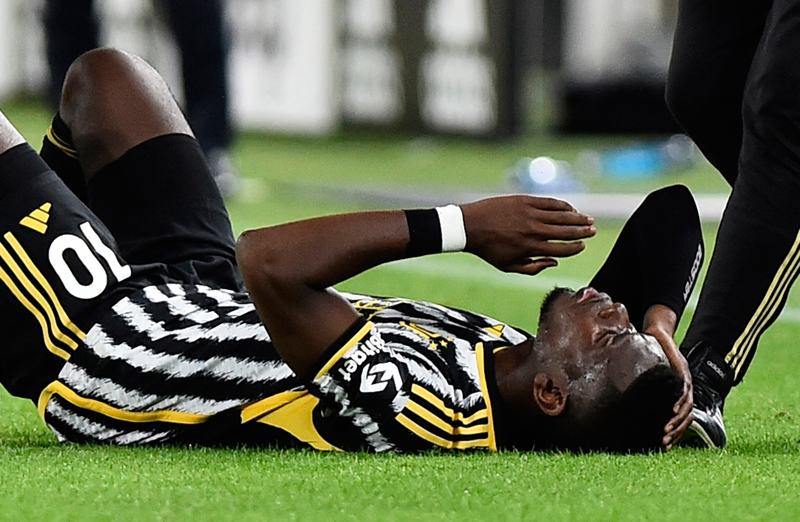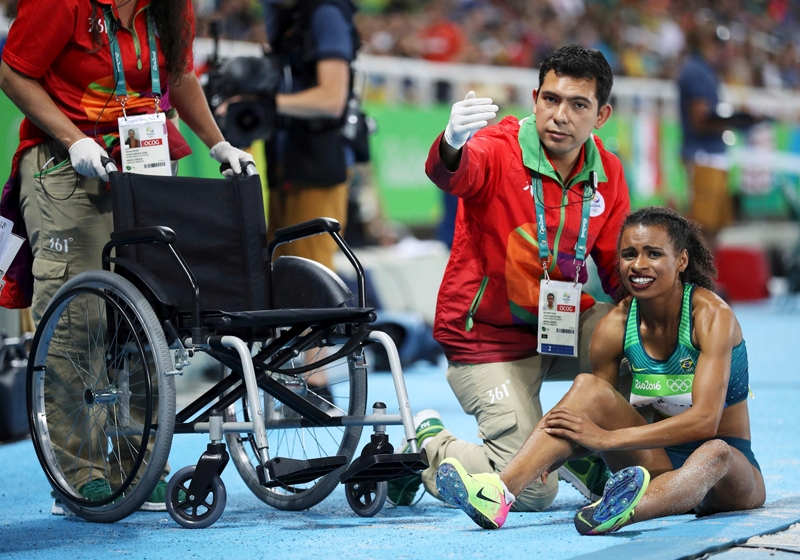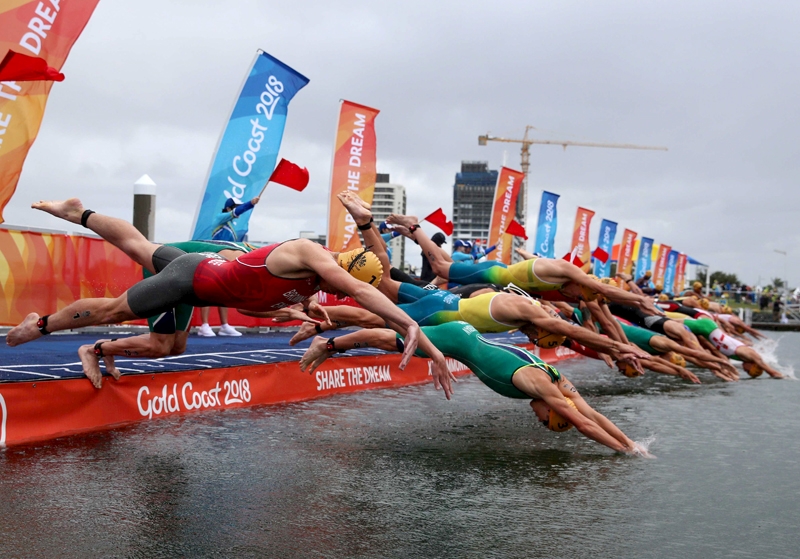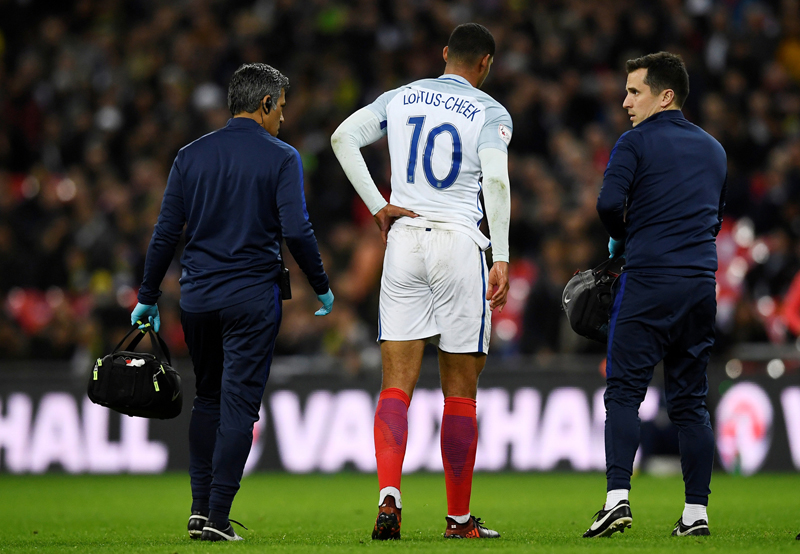You are viewing 1 of your 1 free articles. For unlimited access take a risk-free trial
Shouldering the burden: what all triathletes should know about injury risk

Did you know that shoulder injuries are relatively common in triathletes? Andrew Hamilton explains why, looks at new evidence on the main risk factors, and reveals how triathletes can minimise injury risk
Triathletes are drawn to the sport for a variety of reasons. For some athletes, triathlon is regarded as the ultimate endurance challenge. Others see it as a great ‘all-round’ sport; by spreading the training load across the body, higher levels of fitness can be achieved with less chance of injury than a comparable training load in just one of the three disciplines. Indeed, many accomplished triathletes have migrated to the sport following recurrent or chronic injuries.Injury risk in triathlon
With the above in mind, you might think that the risk of injury as a triathlete is low – but you’d be wrong. The physical burden of triathlon training has been shown to be more than the sum of its component sports(1). At higher levels of competition in particular, the high training volumes and the intense physical stress of competition place high demands on the athletes' bodies(2). As a result, sport-related acute and overuse injuries are actually quite common in triathletes; depending on which study you look at, the prevalence of injury is estimated to be anywhere from 37-91% over the course of a year(3,4).The most common sites of injury identified in triathletes are the lower limb, the back and the shoulder(5,6). In terms of shoulder injuries, perhaps we shouldn’t be surprised; shoulder injuries are common in the sport of swimming. Indeed, it has been estimated that up to 90% of swimmers will be affected by a shoulder injury at some time in their career(7-11).
Causal factors
What are the main causal factors for injury in triathletes? When trying to answer this question, scientists have tried to evaluate the role of both intrinsic factors (internal factors, inherent to the athlete) and extrinsic factors (external factors, independent of the athlete) – see panel 1. But although a number of studies have been published, the findings have been conflicting. This is particularly the case for the risks associated with certain anthropometric (body weight, limb length etc) parameters, weekly training loads and triathlon experience(6,12). And surprisingly, there’s been almost no research into the factors associated with acute and overuse injuries of the shoulder caused by triathlon training (which as we mentioned above, are relatively common in triathletes).Panel 1: Risk factors for shoulder pain
There are many factors, which are believed to influence the occurrence of shoulder pain in athletes such as triathletes and swimmers. Most can be divided into two categories: factors associated with the body (intrinsic), and factors external to the body (extrinsic).Intrinsic factors
- A previous history of shoulder pain
- Rotational range of movement at the shoulder joint itself
- Rotational strength at the shoulder joint
- Strength of the muscles around the shoulder blade
- Muscular flexibility around the shoulder and mid-back spine
- Training Volume
- Technique
- Use of equipment
Shoulder-injury risk – the truth
To try and find out the true risks of shoulder injuries in triathlon, a very recently published study by German scientists has looked at the competition and training habits of 193 amateur triathletes, and related these to the incidence of acute and overuse injuries of the shoulder sustained during the previous 12-month period(13). Between June and August 2013, triathletes training in local triathlon clubs, competing in local triathlon events or visiting German triathlon-related online forums were invited to participate in the study. The inclusion criteria were that all participants had to have been participating in triathlon for at least 12 months and have an amateur status. The triathlete ability level ranged from novice club athletes to top-level athletes.The participating athletes were asked to complete an online-based questionnaire, which identified the number of shoulder injuries and the injury type – whether it was acute or chronic/overuse. Acute injuries were defined as those caused by a single traumatic event, such as a collision, twist or overstretching. Injuries, which could not be attributed to such an event, but resulted from high amount of repetitive motion sequences and loading patterns of the single disciplines of triathlon, were classified as overuse injuries. An injury was defined as any shoulder complaint for which the athlete required general or specific treatment (as decided by a treating physician or the athlete themselves) and/or which resulted in training needing to be either modified or paused.
The questionnaire itself consisted of three parts:
- Documentation of the athletes' competition and training habits, including the weekly training volume in all three disciplines in the past twelve months.
- Reported acute and overuse injuries of the shoulder sustained during the previous 12 months (pre-existing shoulder complaints prior to taking up triathlon were also documented in this section).
- Anthropometric data (height, weight, BMI).
The findings
The key findings from the study were as follows:*Backgrounds - 109 athletes (56%) came from a running background, 40 athletes (21%) from swimming, 25 athletes (13%) from cycling, and 19 athletes (10%) from other sports.
*Weekly training duration – the average weekly duration was 10.7 hours per week, with 3.8 hours spent cycling, 3.5 hours running, 2.2 hours spent swimming, and 1.2 hours per week on average spent weight training.
*Rates of injury -
- 12 athletes (6%) sustained acute injuries and 36 athletes (18%) had experienced an overuse injury during the previous 12 months.
- When related to training volumes, the acute injury rate amounted to 0.11 per 1000 hours of training and the overuse injury rate to 0.33 per 1000 hours of training. The total risk was 0.44 per 1000 hours of training – ie you would expect on average one shoulder injury to occur every 2,000 hours of training.
- There was no association between athletes' age, height, weight, BMI, a history of shoulder complaints or triathlon experience in years for acute or overuse injuries.
- Athletes coming from a cycling background had a significantly higher acute injury rate, compared to athletes who did not have a cycling background (16% vs. 5%). Further analysis showed that athletes with a cycling background spent significantly more time on the bike than triathletes with a non-cycling background (4.9 hours per week vs. 3.6 hours per week).
- Male athletes had a 4-fold higher risk of sustaining acute injuries compared to female athletes (8% vs. 2%).
- Athletes sustaining acute injuries spent a significantly higher amount of time per week doing weight training.
- There was a significant association between the use of paddles during swimming training and the development of overuse injuries, with 24% of the athletes using paddles sustaining overuse injuries, compared to 10% of the athletes who did not use paddles.
Lessons for triathletes
What do these findings mean for triathletes seeking to avoid shoulder injuries? One of the most interesting findings was that the regular use of paddles during swimming training was significantly associated with overuse injuries. Although this is the first study to look at shoulder injury risk in triathletes, this finding is consistent with previous research in swimmers, which has also identified the use of paddles as a risk factor for shoulder injuries(14,15). It’s also why some researchers recommend limiting the use of paddles during training, and perhaps avoiding their use completely when from an injury or for athletes suffering with existing shoulder complaints(16,17). The lessons here are that:- *Triathletes should only perform small volumes of paddle work in a weekly training schedule.
- *Those with history of shoulder injury, or recovering from injury should refrain from paddle use completely.
- *Excellent form is used, especially during upper body exercises.
- *Instruction/coaching is given before any new exercises are incorporated in the training plan.
- *Progression to higher loadings/reps is very gradual, especially when performing shoulder exercises.
- *Strength training is performed when triathletes are fresh – ie not during periods of heavy training loads or in proximity to competitions.
This is also likely to explain the higher rates of acute injuries observed in male triathletes. A large body of evidence has demonstrated that males tend to display more ‘risk-taking’ behaviour than females in many spheres of life, and studies on sporting adults (and children) clearly show that this is the case in high-risk sports(21-23). In terms of risk minimisation, the prevention of falls from the bike and subsequent injury is hard to achieve, especially in race conditions when the fastest possible time really matters! When training however, there are some useful tips. These include:
- *The use of ‘winter tyres’ (which give more traction and grip in cold conditions) during the coolest periods in the year.
- *Regularly checking and maintaining the condition of the brakes and braking performance.
- *Exercising caution when descending, especially on unfamiliar routes that may contain unsighted hazards such as potholes!
- *Anticipating road hazards well in advance, and using progressive and smooth braking.
- *Observing road traffic regulations at all times.
Although triathlon is a multidisciplinary sport, with mechanical loading spread over a wider range of muscle groups and range of movements, the incidence of shoulder injury is comparatively high. The recent evidence shows that the regular use of paddles during swimming training and an increased duration of weight training are both risk factors for overuse injuries of the shoulder. Cycling training volume and subsequent accidents meanwhile seem to be associated with a higher rate of acute injuries. While the prevention of cycling accidents is difficult to address, triathletes can nevertheless reduce injury risk by restricting paddle use and exercising caution when weight training by taking the suggested measures above.
Andrew Hamilton, Sports Performance Bulletin editor
References- Sports Med. 2014; 44(12):1659-92
- Sports Med Phys Fitness. 2010; 50(4):475-85
- Phys Ther Sport. 2013; 14(4):207-12
- Br J Sports Med. 1994; 28(3):191-6
- Br J Sports Med. 2013; 47(13):857-61
- J Sci Med Sport. 2008; 11(4):396-406
- Phys Th in Sp. 2012 Jan; 1-7
- Br Med Bull. 2012 July; 103: 45-88
- Orth Sur. 2012 Jun; 246-251
- Asp Sp Med J. Dec 2014; 3(3): 571-580
- The Phys and Sp Med. Aug 2015; 1-9
- J Orthop Sports Phys Ther. 2003; 33(4):177-84
- PLoS One. 2018 Jun 1;13(6):e0198168
- Am J Sports Med. 1993; 21(1):67-70
- Phys Sportsmed. 2005; 33(9):27-35
- N Am J Sports Phys Ther. 2006; 1(4):166-75
- Mayo Clin Proc. 1987; 62(4):289-304
- Phys Sportsmed. 1985; 13(8):92-105
- Am J Sports Med. 1993; 21(1):67-70
- Curr Sports Med Rep. 2013; 12(5):337-45
- sportsPerm J. 2017; 21: 16-161
- Sportverletz Sportschaden. 2017 Nov 23. doi: 10.1055/s-0043-121357. [Epub ahead of print]
- Clin J Sport Med. 2017 Oct 10. doi: 10.1097/JSM.0000000000000527. [Epub ahead of print]
Newsletter Sign Up
Testimonials
Dr. Alexandra Fandetti-Robin, Back & Body Chiropractic
Elspeth Cowell MSCh DpodM SRCh HCPC reg
William Hunter, Nuffield Health
Newsletter Sign Up
Coaches Testimonials
Dr. Alexandra Fandetti-Robin, Back & Body Chiropractic
Elspeth Cowell MSCh DpodM SRCh HCPC reg
William Hunter, Nuffield Health
Keep up with latest sports science research and apply it to maximize performance
Today you have the chance to join a group of athletes, and sports coaches/trainers who all have something special in common...
They use the latest research to improve performance for themselves and their clients - both athletes and sports teams - with help from global specialists in the fields of sports science, sports medicine and sports psychology.
They do this by reading Sports Performance Bulletin, an easy-to-digest but serious-minded journal dedicated to high performance sports. SPB offers a wealth of information and insight into the latest research, in an easily-accessible and understood format, along with a wealth of practical recommendations.
*includes 3 coaching manuals
Get Inspired
All the latest techniques and approaches
Sports Performance Bulletin helps dedicated endurance athletes improve their performance. Sense-checking the latest sports science research, and sourcing evidence and case studies to support findings, Sports Performance Bulletin turns proven insights into easily digestible practical advice. Supporting athletes, coaches and professionals who wish to ensure their guidance and programmes are kept right up to date and based on credible science.













